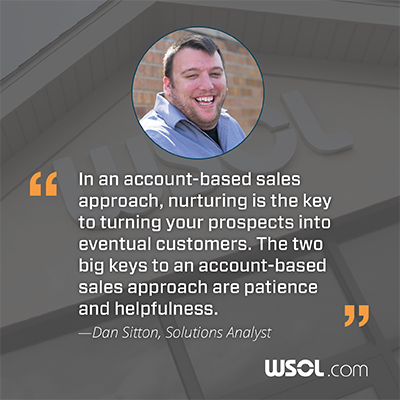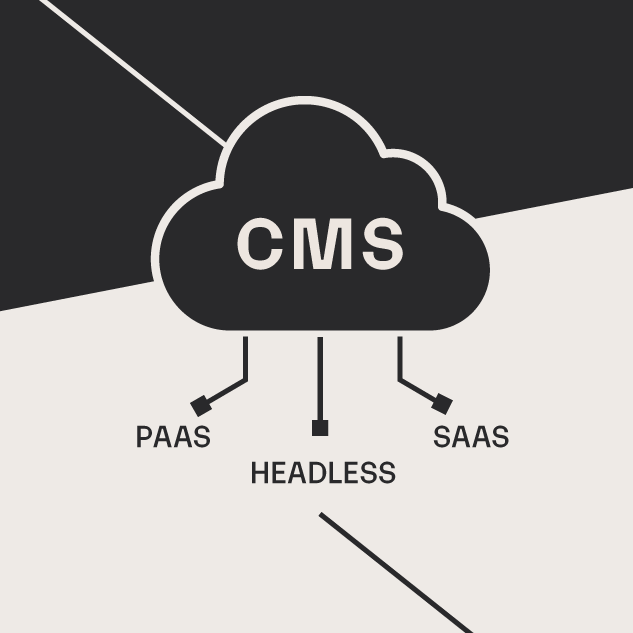
Will Inbound Marketing still work for me if I’m targeting a specific vertical or smaller customer base? How does it relate to account-based sales processes?
There’s no question that HubSpot is a great platform for building an entire inbound marketing approach, but one of the assumptions inbound marketing seems to make is the that the sales cycle is fairly short – usually around one month. A couple of the questions I’ve been hearing a lot of lately are: what if my sales cycle is longer, closer to a year? Will inbound marketing still work for me if I’m targeting a specific vertical or smaller customer base?
The answers to these questions are a little more complex than a simple yes, but HubSpot’s sales and marketing resources can be leveraged to build an account-based approach to your sales. While many of the same principals from inbound sales apply to account-based sales (such as always be helping, leading with useful information, etc.) the application is a little different.
Inbound and Account-Based
A typical inboujnd sales approach assumes that your persona will be doing a majority of the research on his/her own then filling out a form or completing a bottom of the funnel offer to quality himself/herself for your sales team to contact. However, in account-based sales, you already know who your targets are because they are defined in your Ideal Buyer Profiles (IBP). Once you have built your IBP you’ll be able to tier your targets and begin your approach. Some of them might already be engaged in some way with your company while others might not have any engagement.
After determining your targets and knowing the longer (and often specialized) sales cycle, your sales team will engage your prospects and leads closer to the top of the funnel than a traditional inbound sales approach. In doing so, many will still be in the awareness stage but as they move through the buyer’s journey there will be multiple opportunities to engage and drive them down the funnel.
In an account-based sales approach, nurturing is the key to turning your prospects into eventual customers. By working together between sales and marketing you can create a comprehensive plan to engage and nurture leads as they fill out top of the funnel information in an initial engagement. HubSpot has some great tools to manage your leads and drive them down the funnel. Many of these tools reside in the marketing suite, which we won’t be discussing today, but many other tools for account-based selling reside in the CRM and the HubSpot Sales Pro tool.
Prospecting in Account-Based Sales
When prospecting in an account-based sales, one key aspect is knowing in real-time the activity of your target accounts. One of the best ways to manage this is by making sure your target companies are added into the CRM. From there, you can create a field in the customizable profile field to identify which target tier the company fits. If they are a high priority target, that’s something you can even note in the contact record for the company and pin it to the top of the record so that anyone looking at it will be able to spot that note.
Make sure to assign the company to a sales rep, too, so that once individual prospects begin to convert on the site they’ll immediately be assigned to the correct sales rep. Even if you already have some conversions and leads for a company, it’s still good to make sure you get everything in order on the company level because most major company decisions are made by a team of individuals. So you’ll want to make sure each person is getting the information he or she is looking for.
One other step to take in ensuring you’re getting a feed of the activity of targeted companies is creating a view in the Prospects tool of your targeting companies. I recommend even making sure you set up Revisit Notifications for the view so that you’ll get notified whenever someone from your targeted company visits your website. You’ll be able to see what pages they’re looking at which will help inform your approach.
 These revisit notifications can help your sales team in prospecting for the target accounts even if there have not yet been any conversions. By seeing the activity of a target account, your team can leverage that information to open meaningful conversations in their prospecting. When you do get that initial conversion, your sales team can help you engage and nurture that lead as they begin their buyer’s journey.
These revisit notifications can help your sales team in prospecting for the target accounts even if there have not yet been any conversions. By seeing the activity of a target account, your team can leverage that information to open meaningful conversations in their prospecting. When you do get that initial conversion, your sales team can help you engage and nurture that lead as they begin their buyer’s journey.
HubSpot and CRM
HubSpot has some great tools on the marketing side to help drive lead nurturing, but there are some great tools for use through the CRM to help nurture leads in an account-based approach. The Sequences tools is an excellent tool in an account-based approach. If you write email templates for prospecting or nurturing throughout the buyer’s journey for your Ideal Buyer Profile, you can create sequential communication that can be personalized for each account. Not only can you send personalized, templated emails, you can also create tasks that help remind your sales team to take nurturing actions such as a social media connection to a prospect, or a phone call to help explain something.
Creating sequences typically involves your sales team earlier than normal, but helps keep your organization at the top of target accounts’ minds because of the existing relationship.
Another tool beyond Sequences to help you nurture these target account leads is the HubSpot Messages tool. The Messages tool is basically a chat application that pulls the information directly into HubSpot. You can have the chat option only appear for leads that meet a certain criteria. By making sure the chat is available to your target accounts, you can conveniently answer questions as the arise from your prospects. This can help nurture and lead to more conversation as they drive themselves down the sales funnel.
In the end, the two big keys to an account-based sales approach are patience and helpfulness. By leveraging your HubSpot investment and applying these principles, you can position yourself for the prospects to finally approach you when they’re ready to make a move.
Find this information useful? Make sure to SUBSCRIBE to our weekly newsletter for email notifications about posts like this and more.
Related Posts

3 Pro Tips to Make Your HubSpot Workflows Successful
HubSpot's workflows are a powerful tool for connecting with your customers. We share 3 pro tips for getting the most out of your workflows.

Choosing the Right Cloud CMS: Key Factors to Consider
Selecting the right cloud-based Content Management System (CMS) demands a careful balance between budget, technical expertise, and business needs.
Results Matter.
We design creative digital solutions that grow your business, strengthen your brand and engage your audience. Our team blends creativity with insights, analytics and technology to deliver beauty, function, accessibility and most of all, ROI. Do you have a project you want to discuss?
Like what you read?
Subscribe to our blog "Diagram Views" for the latest trends in web design, inbound marketing and mobile strategy.
